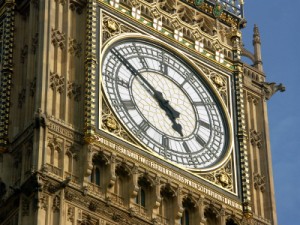 While the national museums have been told to save 15% on their annual budgets, the Department for Culture Media and Sport has been told to cut 41% from April 2011.
While the national museums have been told to save 15% on their annual budgets, the Department for Culture Media and Sport has been told to cut 41% from April 2011.
Details are beginning to emerge about how the announcement yesterday by Chancellor, detailing the largest public spending cuts in a generation, will affect public life in Britain. No aspect of the nation’s spending has been beyond review with cuts to health, education, defence, welfare and administration affecting public services across the board.
The nation’s spending on cultural activities also came under scrutiny of course. Was it as bad as we were expecting? Perhaps.
Initial cuts
As soon as the coalition came to power a wide range of cuts to the Department for Culture, Media and Sport’s (DCMS) operational budget for this year (2010-2011) were announced. £73 million of cuts were announced, including £45 million retracted from the BFI’s new film centre (which was due to include exhibition spaces) and £17 million withdrawn from the long-awaited Stonehenge visitor centre.
The Arts Council was also instructed to reduce spending by £23 million pounds this operational year, including £6 million of public engagement work.
What was announced yesterday?
The Chancellor of the Exchequer’s Comprehensive Spending Review announced cuts for the budgets for the four operational years 2011-2014. Let’s take a look at what George Osborne said:
“The resource budget for the Department for Culture, Media and Sport will come down to £1.1 billion by 2014-15. Administrative costs are being reduced by 41% and 19 quangos will be abolished or reformed.”
Most other Government departments were facing cuts of much less than this - Education 3.4%, Work and Pensions 2.3%, Defence 7.5%, Health 1.3%. In fact only Communities and Local Government saw a deeper cut at a whopping 51%.
“All that is being done so that we can limit four-year reductions to 15% in core programmes such as our national museums, the front-line funding provided to our arts and Sport England's whole sport plans.”
The Chancellor is sure to point out that the front-line funding – which pays for delivery of services to the people – is being cut less than behind-the-scenes administration of central departments like the DCMS.
Part of the cost-cutting here will come from their departure from current office accommodation on Cockspur Street and their intention to share premises with the Department for International Development in Buckingham Palace Road. Given that they are likely to be laying plenty of people off – some estimates place it around half of their workforce – they will certainly need less space for their work.
DCMS has also announced today that it will not support Strategic Commissioning beyond the end of the current financial year.
“We will complete the new world-class building extensions for the Tate Gallery and the British Museum. The Secretary of State will provide details of further projects shortly.”
Fortunately the Chancellor has kept his word on funding to these two huge development projects, rather than abandoning them, like he did with Stonehenge.
“I can also announce today that, in order for our nation’s culture and heritage to remain available to all, we will continue to fund free entry to museums and galleries.”
This was a pre-election promise from the Conservatives, so they’re keen to reinforce that they are making good their culture manifesto.
Got off lightly?
Some quarters have been speculating that the cuts of ‘only’ 15% to the nationals are comparatively small, given the huge cuts seen elsewhere in the cultural sector. The Arts Council is facing a 29.6% cut to it’s funding – which seems rather harsh given that they’ve already cut 21% of their operational and administrative costs in the last 18 months. They’re now being asked to cut administration by a whopping further 50%. The thinking behind this is that ‘front line services’ – the funding they actually give to arts organisations – will ‘only’ need to be cut by 15%, in line with museums.
English Heritage certainly consider themselves to be losers, with a total of 32% cuts to their budget for the four year period. They have said, "The 32% cut to English Heritage's grant from government will be exceptionally challenging to manage after years of funding decline - £130 million real-term cuts over 13 years."
So the overall picture is that the main impact this review has made is to the bodies who hand out government funds. There’s less of an impact on the public-facing institutions such as theatres, art galleries, heritage centres and museums.
In terms of the overall picture, some seem to think that DCMS has got off pretty lightly. The Guardian have reviewed which Government departments they think are the ‘winners’ and ‘losers’ in the review. DCMS is rated as zero by them – no big wins, no big losses. [http://www.guardian.co.uk/politics/interactive/2010/oct/20/csr-cabinet-winners-losers-interactive]
The value of culture
In addition to announcing the cuts, the Chancellor was good enough to point out in his speech that:
“Britain's arts, heritage and sport all have enormous value in their own right, but our rich and varied cultural life is also one of our country's greatest economic assets.”
He’s completely correct, of course. Tourists visiting the quality museums we have in this country today contribute enormously to our economy and their continued support should be encouraged. That’s perhaps why Visit Britain survived the quango cull [https://museuminsider.co.uk/2010/10/14/feature/quango-shake-up-for-heritage-sector/]last week.
The support of the nation’s museum and heritage industry by the private sector will continue to be important too as the country continues to climb out of recession. Private investment in heritage projects and sponsorship and in-kind deals are going to be crucial to the success of the development of the sector.
But it’s perhaps harder to predict the effect yesterday’s cuts will have on suppliers to the sector. Certainly with less seed funding for Arts Council delivery and the scrapping of the BFI film centre and delay/cancellation of Stonehenge, key players such as architects, designers and building contractors are losing out on what they had previously thought to be guaranteed work.
The British Museum and Tate development projects, featured on Museum [Insider], have been given the green light by the Chancellor, which is great news, but how much other development work is likely to be commissioned in the years to come? We’ll watch this space for the knock on effects.
Keeping up to date
Museum [Insider] will be publishing a full analysis of the impact of the coalition government’s spending review and policy direction later this year. More details of where the cuts will come exactly are being announced in the next few weeks, so we’ll collate all this information and bring it to our subscribers.
For up-to-date monitors of how the announcements in Comprehensive Spending Review are affecting the sector, we suggest following the twitter hashtag #museumcuts [http://twitter.com/#search?q=%23museumcuts] or keeping an eye on the updated news pages of the Museums Association website [http://www.museumsassociation.org/museums-journal/news].
All quotes from the Chancellor of the Exchequer are taken from Hansard, the official record of the House of Commons.
(20 October 2010, Column 962.) [http://www.publications.parliament.uk/pa/cm201011/cmhansrd/cm101020/debtext/101020-0001.htm#10102049000009]
Author:
Steve Slack is a writer and researcher working in the museum and heritage sector.
www.steveslack.co.uk






